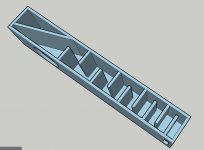I have some Jensen hf-223 coax in HealthKit ae-40 cabinets (large untuned ported enclosures) very sensitive, sound amazing at low volume but they get boomy very quickly when power is added. No driver t/s. The way I see it I have a few options:
1.) Remove the port and make a sealed box.
2.) tune the port by cutting/stuffing /listening/testing
3.) build foam-core karl-somethings for the jensens
How would I go about sizing/picking a Karlson type enclosure for these 12” jensens?
It’s hard without TS parameters. You can measure with $5 diy rig and sound card and REW software (free) or use $100 DATS tool.
A sealed box or open baffle is best if you don’t know.
You can cover the whole front aperture with grill cloth if your significant other doesn’t like the K slot curve. It will look like any other “box” speaker.
You are right. I can cover it with a grill.
Here's what I could find out about the driver; frequency: 65Hz to 20KHz, sensitivity: 89 dB/W/M, has a 25mm VC and a magnet of 10 oz. Has max 120W, 4ohm, 6.5" (165mm). I have only 2 drivers, so only one can go into one box.
Last edited:
That’s doesn’t tell me what I need to simulate it. Is there a brand and model number and have you looked it up online?
Sorry, there's nothing more even online. They are few years old. The driver gives good amount of bass in a simple cardboard box (175mm x 175mm x 300mm), without anything in it, just fixed on the front at the top, and with a vent at the bottom. It gives much nicer bass, when stuffed with a towel. Mid and highs are just there, so not looking for them. (Of course, it doesn't match the sound of the Sony speakers, we normally use.)
The hole diameter is 144mm (5.6"), which is about the diameter of the cone, so If you can point me to a somewhat matching mini K, I'll try that.
A photo of the driver would be helpful and hopefully closeup of the manufacturer's label or model number stamp (usually on the magnet/frame or basket on the back)? I still don't know who made it and the model number.
So far we have:
65Hz to 20KHz, sensitivity: 89 dB/W/M, has a 25mm VC and a magnet of 10 oz. Has max 120W, 4ohm, 6.5" (165mm), and 144mm dia cutout hole.
Is the cone made of paper, is the surround foam or rubber or cloth, is there a dustcap or phase plug, is there a whizzer cone, is the magnet ferrite or Nd, is the magnet vented? All these details and a photo will help us to see approx what kind of driver this is.
Probably has a whizzer cone if specs claim 20kHz. 89dB is 1W at 4ohms or 2vrms then and not 2.83v (which will be perhaps 92dB at 2.83v), 120w is usually "program power" rated crest factor of 6dB above thermal max of voice coil or 60w rms continuous.
My guess not having see a photo is that is might be a paper cone full range with whizzer, rubber surround, fs about 65Hz, Qts about 0.65.
So far we have:
65Hz to 20KHz, sensitivity: 89 dB/W/M, has a 25mm VC and a magnet of 10 oz. Has max 120W, 4ohm, 6.5" (165mm), and 144mm dia cutout hole.
Is the cone made of paper, is the surround foam or rubber or cloth, is there a dustcap or phase plug, is there a whizzer cone, is the magnet ferrite or Nd, is the magnet vented? All these details and a photo will help us to see approx what kind of driver this is.
Probably has a whizzer cone if specs claim 20kHz. 89dB is 1W at 4ohms or 2vrms then and not 2.83v (which will be perhaps 92dB at 2.83v), 120w is usually "program power" rated crest factor of 6dB above thermal max of voice coil or 60w rms continuous.
My guess not having see a photo is that is might be a paper cone full range with whizzer, rubber surround, fs about 65Hz, Qts about 0.65.
Last edited:
A photo of the driver would be helpful and hopefully closeup of the manufacturer's label or model number stamp (usually on the magnet/frame or basket on the back)? I still don't know who made it and the model number.
So far we have:
65Hz to 20KHz, sensitivity: 89 dB/W/M, has a 25mm VC and a magnet of 10 oz. Has max 120W, 4ohm, 6.5" (165mm), and 144mm dia cutout hole.
Is the cone made of paper, is the surround foam or rubber or cloth, is there a dustcap or phase plug, is there a whizzer cone, is the magnet ferrite or Nd, is the magnet vented? All these details and a photo will help us to see approx what kind of driver this is.
Probably has a whizzer cone if specs claim 20kHz. 89dB is 1W at 4ohms or 2vrms then and not 2.83v (which will be perhaps 92dB at 2.83v), 120w is usually "program power" rated crest factor of 6dB above thermal max of voice coil or 60w rms continuous.
My guess not having see a photo is that is might be a paper cone full range with whizzer, rubber surround, fs about 65Hz, Qts about 0.65.
Here it is.
Ahh, you never said it was a coaxial autosound driver! I should have guessed with 4ohm impedance.
So this is not going work for a Karlsonator or any vented alignment as it was designed for a car door as an infinite baffle or sealed box type application as the Qts is going to be high, circa 1+ typically. You can make an aperiodic box - large volume with an open floor elevated a few inches on feet for the bass to escape. Line the inside with fiberglass. It can sound quite good and nice rich bass. Make the cabinet curved wall like a tear drop cross section.
The closest thing you can look up would be a Saba Greencone cabinet from yesteryear.
Here is a modern take on that cabinet by TG:
Greencones
Or something like this:

The volume is not important. Bigger the better - like at least 4 cu feet. Maybe 40in tall. You could do this with curved foam core sufficiently braced. Use same technique I used for curvy wall Tabaq.
TABAQ TL for Tang Band
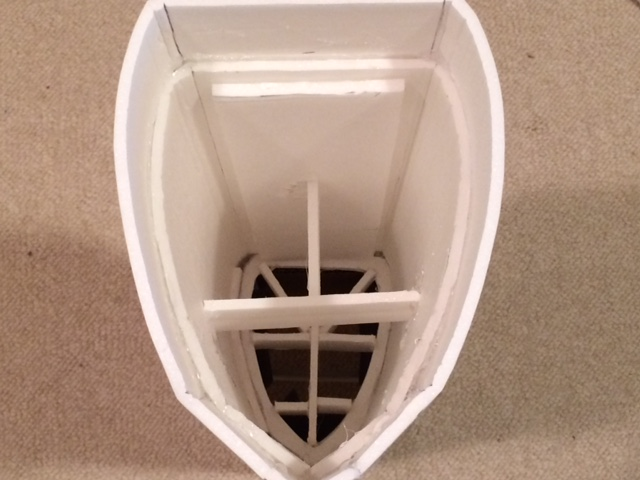
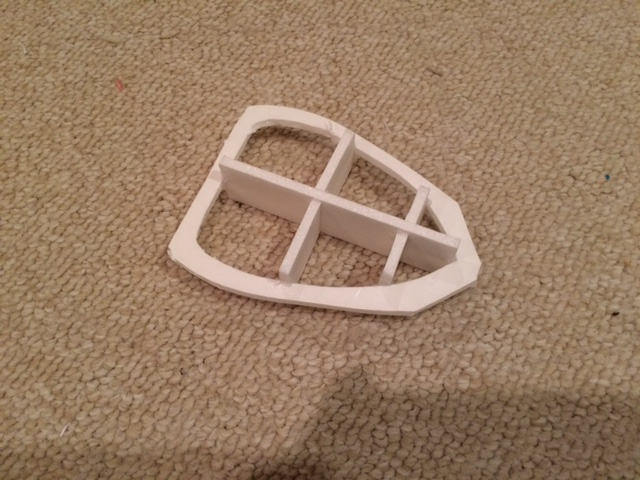
*** but I see where you have been leading to based on your posts... ****
You are curious about back loaded horns or transmission lines. You are looking for an aero acoustic project.
Get a driver that was designed for vented alignments and has actual TS parameters published. Look for something with Qts under 0.50. A good driver to play with is the W5-2143. Super full range suitable for all sorts BLH, TL, BR, MLTL, etc.
If that’s too much $ at $100/pair. Try Dayton PA130-8 about $40/pair.
Or make it smaller and use something like a 3.5in full range. Like 3FE22-8, although that’s more than PA130-8.
Get some TC9FD’s they are fun to play with and can work well in vented alignments even though Qts is about 0.7.
So this is not going work for a Karlsonator or any vented alignment as it was designed for a car door as an infinite baffle or sealed box type application as the Qts is going to be high, circa 1+ typically. You can make an aperiodic box - large volume with an open floor elevated a few inches on feet for the bass to escape. Line the inside with fiberglass. It can sound quite good and nice rich bass. Make the cabinet curved wall like a tear drop cross section.
The closest thing you can look up would be a Saba Greencone cabinet from yesteryear.
Here is a modern take on that cabinet by TG:
Greencones
Or something like this:

The volume is not important. Bigger the better - like at least 4 cu feet. Maybe 40in tall. You could do this with curved foam core sufficiently braced. Use same technique I used for curvy wall Tabaq.
TABAQ TL for Tang Band


*** but I see where you have been leading to based on your posts... ****
You are curious about back loaded horns or transmission lines. You are looking for an aero acoustic project.
Get a driver that was designed for vented alignments and has actual TS parameters published. Look for something with Qts under 0.50. A good driver to play with is the W5-2143. Super full range suitable for all sorts BLH, TL, BR, MLTL, etc.
If that’s too much $ at $100/pair. Try Dayton PA130-8 about $40/pair.
Or make it smaller and use something like a 3.5in full range. Like 3FE22-8, although that’s more than PA130-8.
Get some TC9FD’s they are fun to play with and can work well in vented alignments even though Qts is about 0.7.
Last edited:
So this is not going work for a Karlsonator or any vented alignment as it was designed for a car door as an infinite baffle or sealed box type application as the Qts is going to be high, circa 1+ typically. You can make an aperiodic box - large volume with an open floor elevated a few inches on feet for the bass to escape. Line the inside with fiberglass. It can sound quite good and nice rich bass. Make the cabinet curved wall like a tear drop cross section. ...
Thank you for answering and for the ideas.
The car audio drivers are flat, and come with a tweeter co-axially mounted, which is an advantage. These drivers usually work in a noisy environment, so the "leaking" box is not much of a problem. They are usually packed in a tight plastic box, little thicker than the driver itself and stuffed with quality damping material. These speakers are usually pointed at an area just below your knees, and practically at 90 degrees to your ears from the side, than in from front, one near and one far. But, the stereo sound is pretty good and the bass is rich. This gives something to ponder about; why not place the home speakers also the same way, instead of in front of you? Facing out 90 degrees from the side walls, and practically parallel to where you listen from.
Now, back the matter of the tall speaker box. The best, of course, is round tube, as the circular surface would offer the highest resistance against vibrations/resonances. I've listened to the back of this driver, straight back and at an angle, more or less perpendicular to the cone's back surface. The sound is bass. When the speaker placed in a hole at the top of the tall box (cardboard), the bass sound coining from everywhere was nicer. And, with stuffing (a hand towel) it became even better. I said everywhere, as that sound didn't come (not only ?) from the front face of the speaker, but from everywhere from the box, even with stuffing. It is interesting, whether to cancel the "leaking" from the final box or not, whether that leaking is good or bad, or make it a controlled leaking.
True, when I made a hole on the front face at the bottom, sound became even better. It is not that aesthetic to have a hole in the box in the front, so better to have it at the bottom unseen. And, putting the box on some thin legs is even nicer. If the boxes are standing by themselves, away from any furniture, then the whole thing must look nice. The anti-vibration speaker enclosure being a tube, it has to be hidden in another enclosure.
In a TL or back loaded horn or something like that, the idea is to make use of the sound emitted by the back surface of the cone and slow it down and emit it from a hole(s) to get much lower sound. If I use the same car audio driver/speaker in such an enclosure with obstructions, won't it give even better bass? You've been doing lots of experiments, hence the question(s).
You are still stuck on the “round tube” being special. It’s not - only if you happen to want to use ready made piping or paper tubes used for concrete molds (called “sonotube” brand name). Because it’s a total waste of resources and time to make tube and cover with another enclosure. If you are concerned about vibrations, bracing usually solves or even using slightly thicker material. But the shape of the foam teardrop cross section above is actually very stiff. Having curvature in the side wall makes it stronger. But I have had luck with flat wall boxes with bracing. Look at the Nautaloss - flat walls with bracing. Or look at Cornu also lots of inherent bracing.
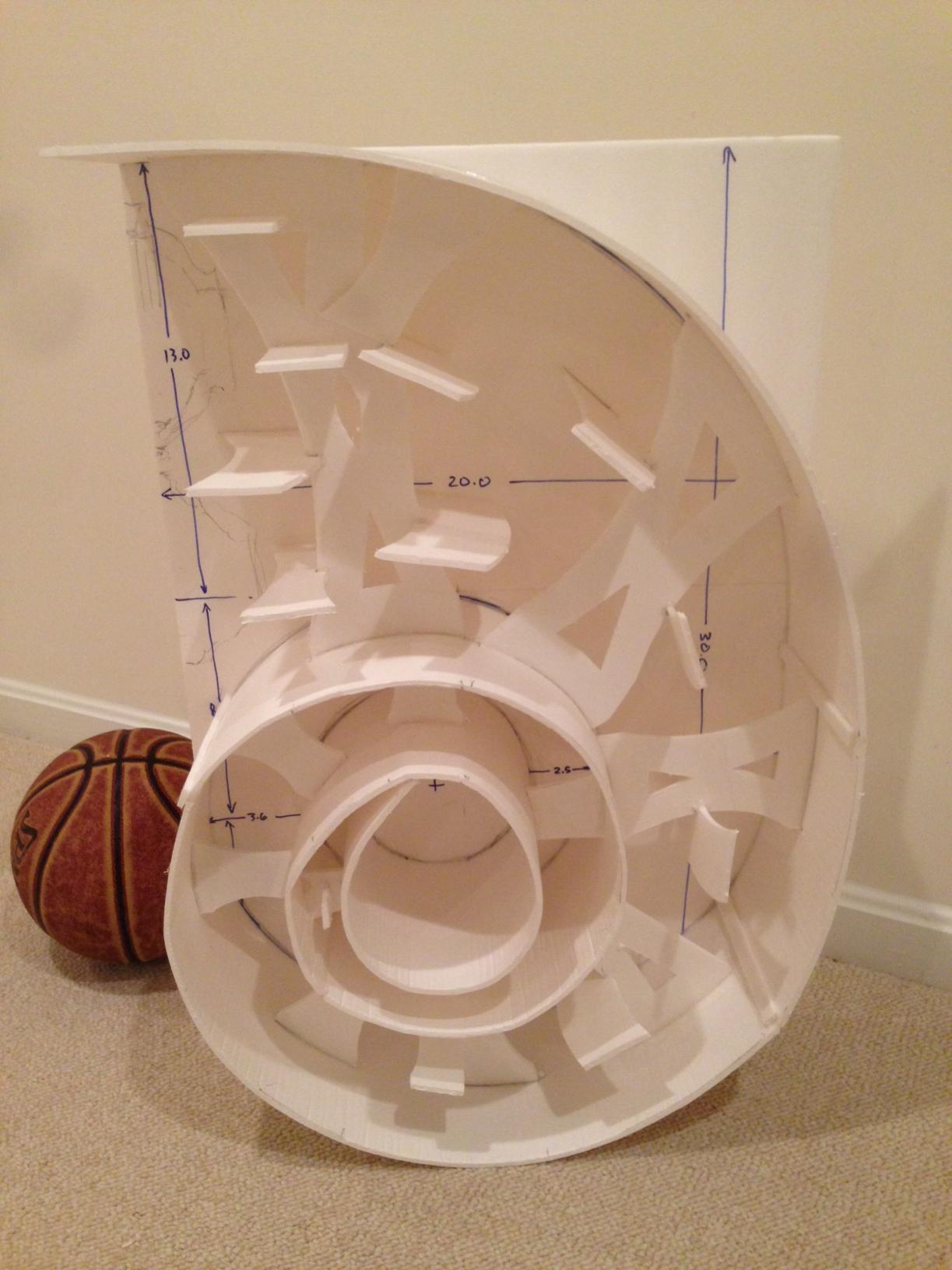
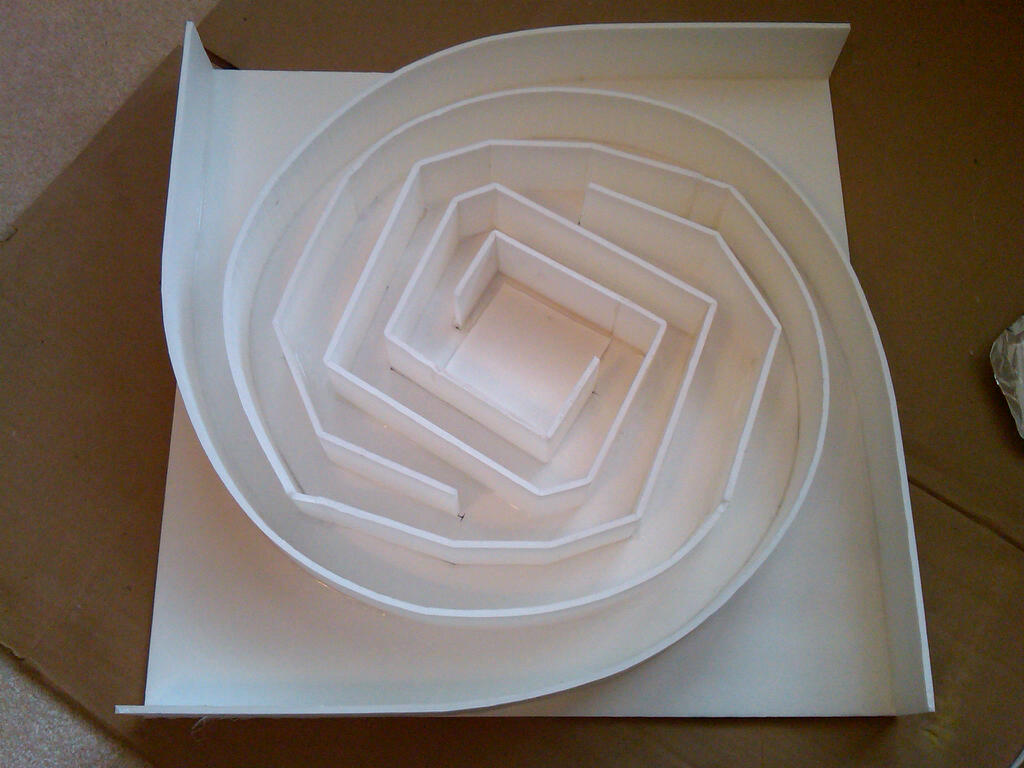
Here is an example of using pvc pipe as speaker enclosure:

A round tube will actually support some extra resonance modes that are not there in non symmetrical shapes due to it symmetry. They may or may not be a problem depending on the their characteristic frequency.
Here is an example of using pvc pipe as speaker enclosure:

A round tube will actually support some extra resonance modes that are not there in non symmetrical shapes due to it symmetry. They may or may not be a problem depending on the their characteristic frequency.
Last edited:
You are still stuck on the “round tube” being special. It’s not - only if you happen to want to use ready made piping or paper tubes used for concrete molds (called “sonotube” brand name). Because it’s a total waste of resources and time to make tube and cover with another enclosure. If you are concerned about vibrations, bracing usually solves or even using slightly thicker material. But the shape of the foam teardrop cross section above is actually very stiff. Having curvature in the side wall makes it stronger. But I have had luck with flat wall boxes with bracing. Look at the Nautaloss - flat walls with bracing. Or look at Cornu also lots of inherent bracing.
Those braces also break the sound waves, reflect/deflect them as they move to find an opening. The flat side of the speaker also vibrates/resonates and send sound out from its surface. Am I correct?
Here is an example of using pvc pipe as speaker enclosure:
A round tube will actually support some extra resonance modes that are not there in non symmetrical shapes due to it symmetry. They may or may not be a problem depending on the their characteristic frequency.
If these tube speakers were made by you, I have some questions;
since, the woofer is firing upwards, and the tubes are about 1m or more, above the ears of a sitting person, do you hear the full sound from those up firing speakers? Or, that sound hits the small tweeter's tube and sort of deflects? Do you find the tube resonating on its vertical surface?
The braces are invisible to the bass sound waves that they are directing. Let’s say you want output below 100Hz to come from the channel. 100Hz is 3.4m wavelength and it requires something larger than about 1/3rd the wavelength to interact and cause constructive/destructive interference. Or anything smaller than 1m is of no consequence. You should read up on acoustics and waveguides and transmission lines. A good place is:
Quarter Wavelength Loudspeaker Design
I did not make the tube speaker. That’s based on the Linkwitz LX Mini design I got from the web search. Sorry I did not make that clear.
LXmini Challenge
Quarter Wavelength Loudspeaker Design
I did not make the tube speaker. That’s based on the Linkwitz LX Mini design I got from the web search. Sorry I did not make that clear.
LXmini Challenge
There was (and is) very much more to Siegfried Linkwitz than his electronics. He talks about Acoustics & Hearing. I understand him very well, senses are just a perception, and nothing more.
Thank you for that link to Linkwitz web site. Interesting ideas about tubes and sound around us, and how we "feel" it, and what (loud)speakers are to be, so we can enjoy the sound coming out of them, with or without other sounds in the room.
"Some audiophiles like to talk about new equipment brake-in. I think it is mostly their brain breaking in, because the brain has plasticity, and is eventually adapting to the reality. The longer the break-in time, the more artificial the sound must have been."
I've read many times people writing about the speakers "breaking in" in many threads, but actually it was their brain matching itself (breaking in) to those speakers. Because they created them, so are connected with them, and want them to be good.
Thanks!
That's still a thing. Most drivers require some amount of break-in to limber up the suspension. It has nothing to do with perception or hearing at all, since it's often done when no one is around to hear it. My MarkAudio alpair 10.3 drivers were suggested to be run in at about 80hrs. I'm fairly new to all this, but I could absolutely hear a difference in sound from hour 1 to hour 80+, and I wasn't present during hours 2-79, so I know my brain had nothing to do with the adjustment.
- Home
- Loudspeakers
- Full Range
- Foam Core Board Speaker Enclosures?
